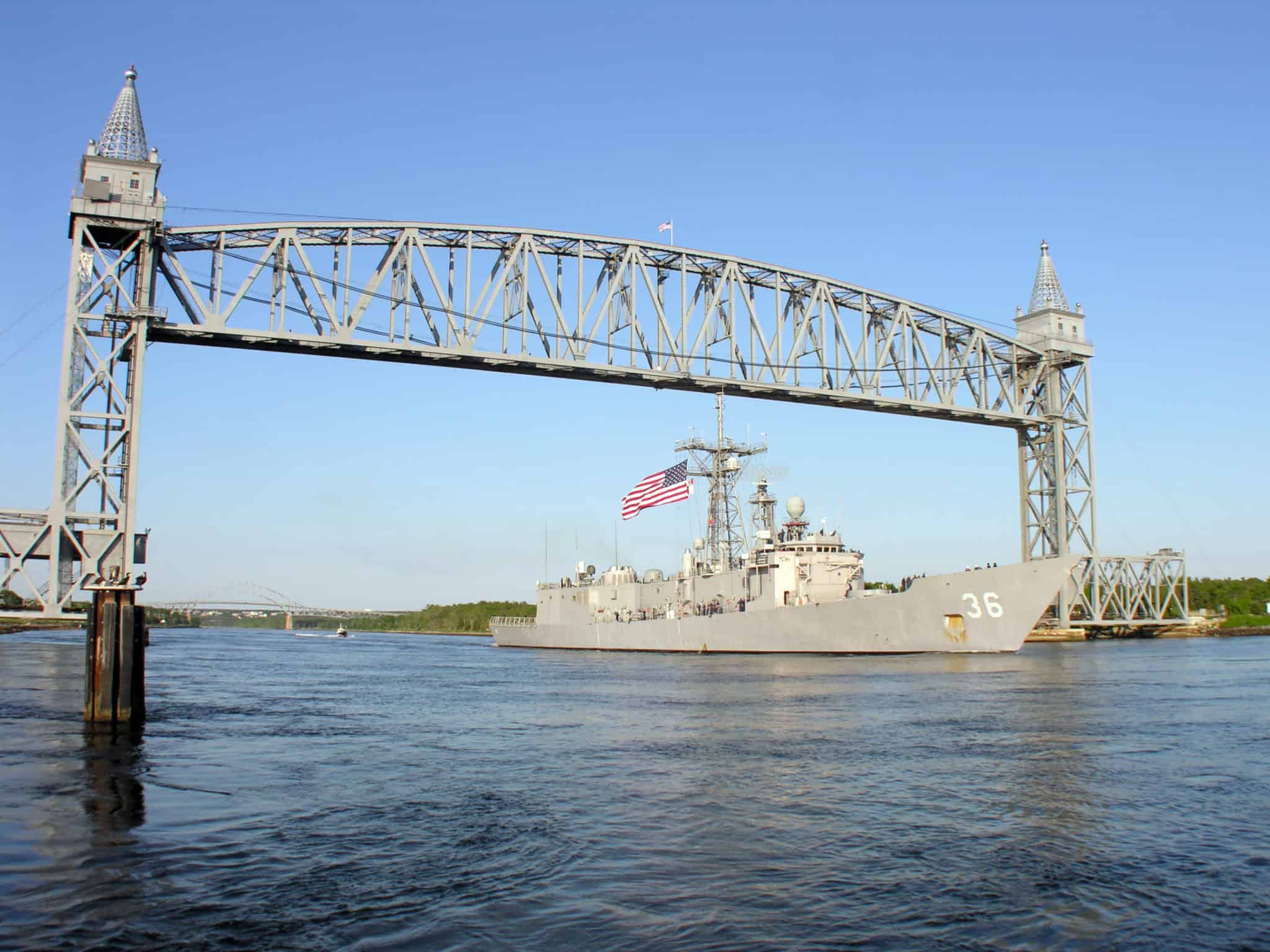The Cape Cod Canal Railroad Bridge, also known as Buzzards Bay Railroad Bridge, it’s a vertical lift bridge located in Bourne, Massachusetts near Buzzards Bay.
Little history..
Between 1909 – 1914, the Cape Cod Canal was built serving as a private waterway, transforming Cape Cod into an island.
On account of that, the island needed a connection with the mainland, the rest of Massachusetts.
Before the actual bridge, there was a 2,200 tons Strauss trunnion Bascule Bridge, spanning about 160 foot, being pivoted on the north side of the Canal, using a single counterweight. The bridge had an opening of 140 feet for vessels, in the raised position.
Credit Wikipedia.org
By 1933, the U.S Government was already in canal possession. The US Army Corps of Engineers has been tasked with the mission of improving the canal. They did so by widening the waterway to nearly 500 feet, which required a new railroad bridge construction.
The U.S Army Corps of Engineers hired a few construction companies, Klapp, Parsons, Brinckeroff, Douglas of New York to supervise the construction and other companies to be in charge of the architectural phase of the bridge, those were McKim,Mead and White of New York.
So that’s when the construction began, with funding secured under the National Industrial Recovery Act of 1933.
(adsbygoogle = window.adsbygoogle || []).push({});
The Cap Code Canal Railroad Bridge
The new bridge was sited only 60 feet away from the old one, doing so, the engineers were able to save time and money in future rail tracks realignment.
The Cap Code Canal Railroad Bridge was assembled in the lowered position, in three sections. Starting with the sides and finishing with the center section, totaling 16-panels, 6 panels for each section. The Canal was closed for only 5 days, only when the center of the bridge was assembled.
On September, 20, 1935, just 2 years after the construction started, the Cap Canal Code Railroad Bridge was raised for the first time ever, and the first time crossed it on December 29, 1935.
With a total cost of 1,56 million dollars, when constructed it was the longest vertical lift railroad bridge in the world.
How does Cape Cod Railroad Bridge work?
The Cape Cod Railroad bridge is a vertical lift bridge, which means that the center span lifts up and down.
The 2,200-ton center span is counter-weighted with a 1,100 ton concrete filled steel-plated box that hangs in both towers. The span is connected to the counterweights by 40 steel cables.
At the top of each tower, there are four sheaves, each one has a 16-feet diameter and weights 34 tons. The sheaves turn, moving the cables that lower the span and raise the counterweights, using four electric powered motors, each supplying 150-HP.
With about 2 minutes and a half duration time for lifting or lowering the center span, this proved to be a very efficient and great way of solving the connection.
The Cape Cod Railroad Bridge – Today
Today the main use for the bridge is to haul material from a facility in Rochester, MA to Cape Cod, with trains hauling everyday, except on Sunday. CapeFLYER uses the bridge for a seasonal passenger train. The rail over the bridge is owned by MassDOT.
The bridge has a total vertical clearance of 135 feet, and a total height of 271 feet. Carrying one track, the bridge is kept in the raised position until a train needs to cross.
The Cape Cod Railroad Bridge Rehabilitation
Between 2001 and 2003, the bridge underwent a massive rehabilitation, which included new counterweights cables, new electrical system, paint.
Reference credit
Recommended
Cape Cod Canal Railroad Bridge – History, FactsApril 7, 2020Railroad Restaurants – Train, Railway ThemedApril 7, 2020Railroad Bridges in PennsylvaniaApril 4, 2020

